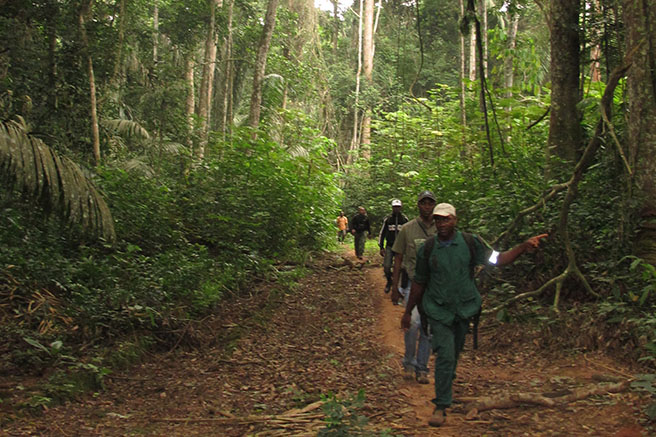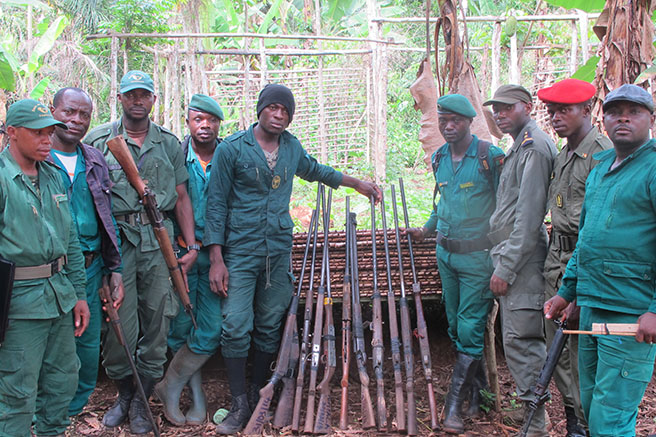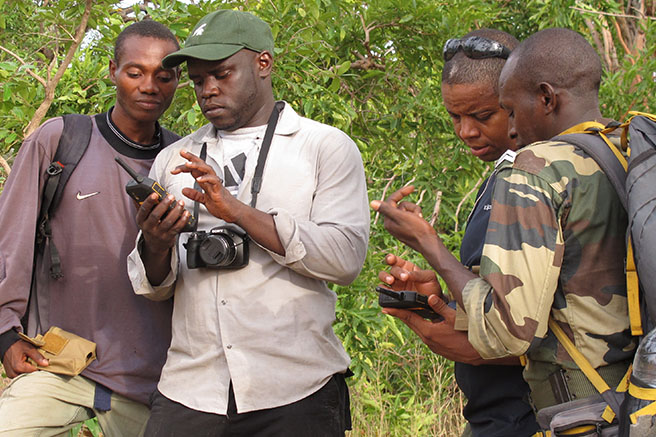Keeping an Eye on Our World Heritage

On Wednesday, the World Parks Congress (WPC) in Sydney wrapped up with a moving shout-out to a number of rangers from Africa who every day defend the continent’s natural heritage.
Considering Africa’s extraordinary assemblage of fauna, flora and wild landscapes—it’s home to one third of the planet’s biodiversity—that’s a big job for rangers and community scouts alike. And the job isn’t getting any smaller or easier. Since 1970, total protected area coverage in Africa has increased nearly two-fold and now encompasses 3.06 million sq. km of terrestrial and marine habitat, including 37 natural and 4 mixed UNESCO World Heritage Sites across 24 different countries.
Recently the International Union for Conservation of Nature (IUCN) issued the World Heritage Outlook 2014, a first-of-its-kind report that assesses all of the world’s natural and mixed World Heritage Sites. As AWF Program Design Director Karen Ross describes it, it’s a lengthy and arduous process getting a place listed as a World Heritage Site. Ross would know. She worked for many years to get Southern Africa’s Okavango Delta listed, and in June of this year, the Delta finally became the 1000th World Heritage Site.
“The esteemed designation lends a much needed extra layer of protection for these areas,” remarked Ross in a joint statement released at this year’s World Parks Congress urging a no-go and no-impact policy in World Heritage Sites. “They are natural wonders with outstanding universal value and nothing should be allowed to destroy or disrupt that value. Such sites should be sacred.”
Over the past decade, only half of all natural World heritage Sites had been regularly monitored. Now with the World Heritage Outlook, all sites will be monitored closely and their conservation status assessed every three years. The report rates each site according to four categories:
- Good
- Good with some concerns
- Significant concern
- Critical
The good news, according to the report, is that two thirds of the assessed sites are in fairly good shape, receiving either a “Good” or “Good with some concerns” rating. The not so good news is that out of the 19 sites that received a “Critical” rating, 13 of these are in Africa. Two of these—Cameroon’s Dja Faunal Reserve and Senegal’s Niokolo-Koba National Park—are areas that AWF has recently begun working in.
The Dja Faunal Reserve is one of Africa’s largest rainforests and is part of the Congo Basin rainforest. It is home to a wide variety of primates, including western lowland gorillas, chimpanzees, white-collared mangabeys, mandrills and others. Forest elephants, leopards, bongos and a rich variety of other animal and plant species are also found in this protected area.
AWF is presently training Dja rangers to use CyberTrackers to conduct baseline ecological monitoring around the reserve. In addition, it is enhancing the effectiveness of anti-poaching patrols, resulting in the systematic dismantling of a number of poaching camps inside the periphery of the park.

Bushmeat continues to end up at nearby markets, however, suggesting that poaching activities have carried on deep inside the park. Next year, AWF’s director of great ape conservation, Jef Dupain, will take a “walk” through Dja, accompanied by rangers and researchers, to flush out illegal activities at the protected area’s core.
“There are a number of threats facing this World Heritage Site, from bushmeat hunting to logging concessions on the borders,” says Dupain. “This is a unique site with extraordinary biodiversity. We have a small window to reverse the course Dja is on. Otherwise, it’s possible it could become a World Heritage Site in danger.”
In Niokolo-Koba National Park, similar ecological monitoring using CyberTrackers is being done.

Near the park in southeastern Senegal, AWF is participating in a large-scale survey of chimpanzees living outside of protected areas. The survey will determine where the chimp corridors are between protected areas and research sites; how many chimpanzees live in the area and how are they dispersed; and what the major threats are. Survey results will feed into a national conservation action plan, which will then guide efforts to protect critical chimpanzee habitat amid a gold mining rush in Senegal’s southeastern corner.
As AWF digs its heels in at Dja, Niokolo-Koba and other World Heritage Sites across Africa, the goal is to ensure these areas of outstanding universal value do not further deteriorate but instead thrive as their overall conservation status improves over time.
For more information on the conservation status of World Heritage Sites, check out IUCN’s new World Heritage Outlook website, where you can quickly learn about each site’s conservation status, threats (if there are any) and recommendations for its continued or enhanced conservation.